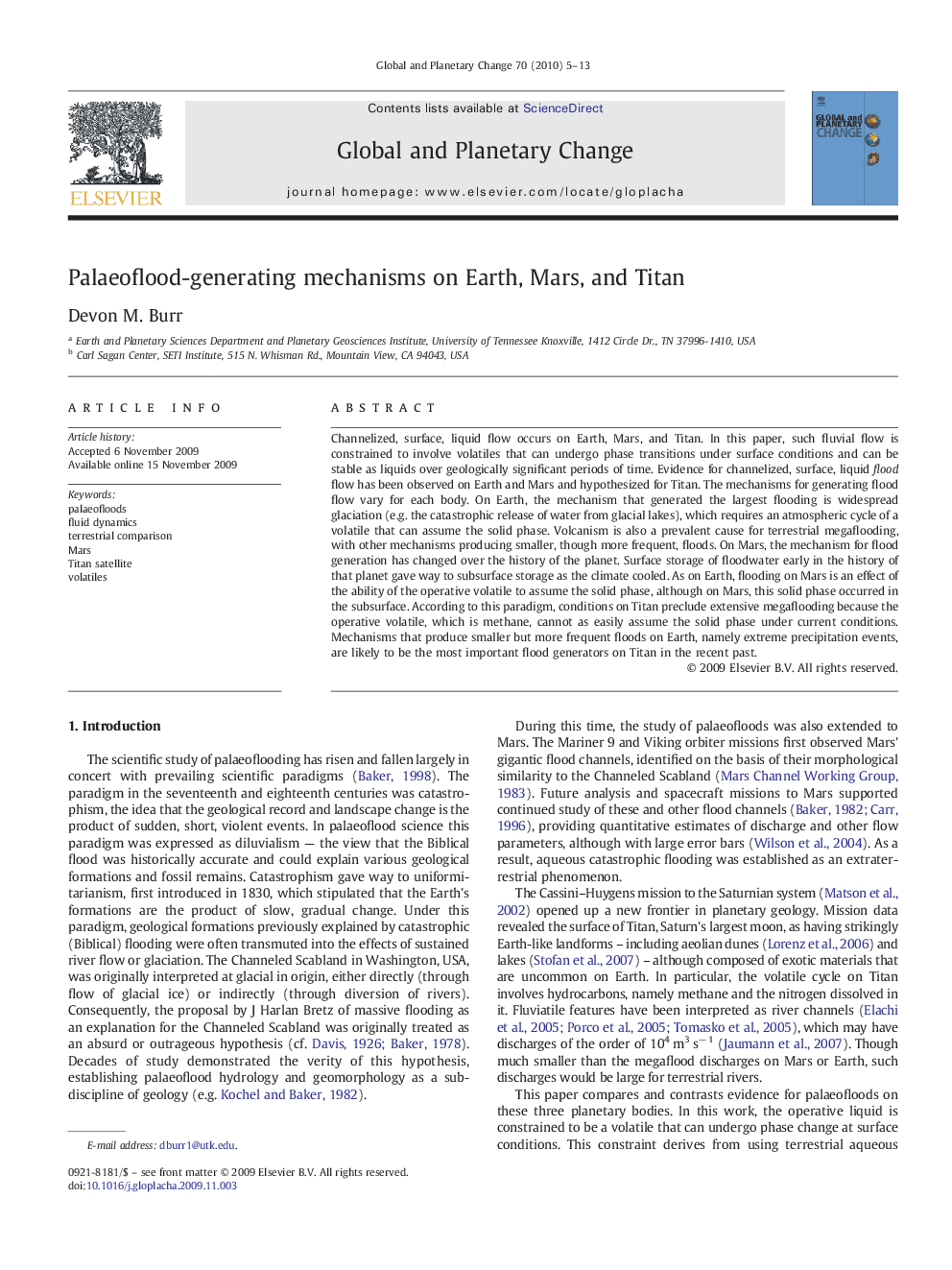| Article ID | Journal | Published Year | Pages | File Type |
|---|---|---|---|---|
| 4463968 | Global and Planetary Change | 2010 | 9 Pages |
Channelized, surface, liquid flow occurs on Earth, Mars, and Titan. In this paper, such fluvial flow is constrained to involve volatiles that can undergo phase transitions under surface conditions and can be stable as liquids over geologically significant periods of time. Evidence for channelized, surface, liquid flood flow has been observed on Earth and Mars and hypothesized for Titan. The mechanisms for generating flood flow vary for each body. On Earth, the mechanism that generated the largest flooding is widespread glaciation (e.g. the catastrophic release of water from glacial lakes), which requires an atmospheric cycle of a volatile that can assume the solid phase. Volcanism is also a prevalent cause for terrestrial megaflooding, with other mechanisms producing smaller, though more frequent, floods. On Mars, the mechanism for flood generation has changed over the history of the planet. Surface storage of floodwater early in the history of that planet gave way to subsurface storage as the climate cooled. As on Earth, flooding on Mars is an effect of the ability of the operative volatile to assume the solid phase, although on Mars, this solid phase occurred in the subsurface. According to this paradigm, conditions on Titan preclude extensive megaflooding because the operative volatile, which is methane, cannot as easily assume the solid phase under current conditions. Mechanisms that produce smaller but more frequent floods on Earth, namely extreme precipitation events, are likely to be the most important flood generators on Titan in the recent past.
